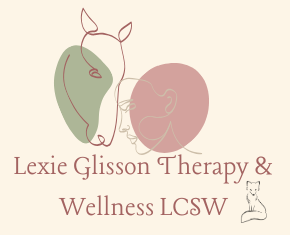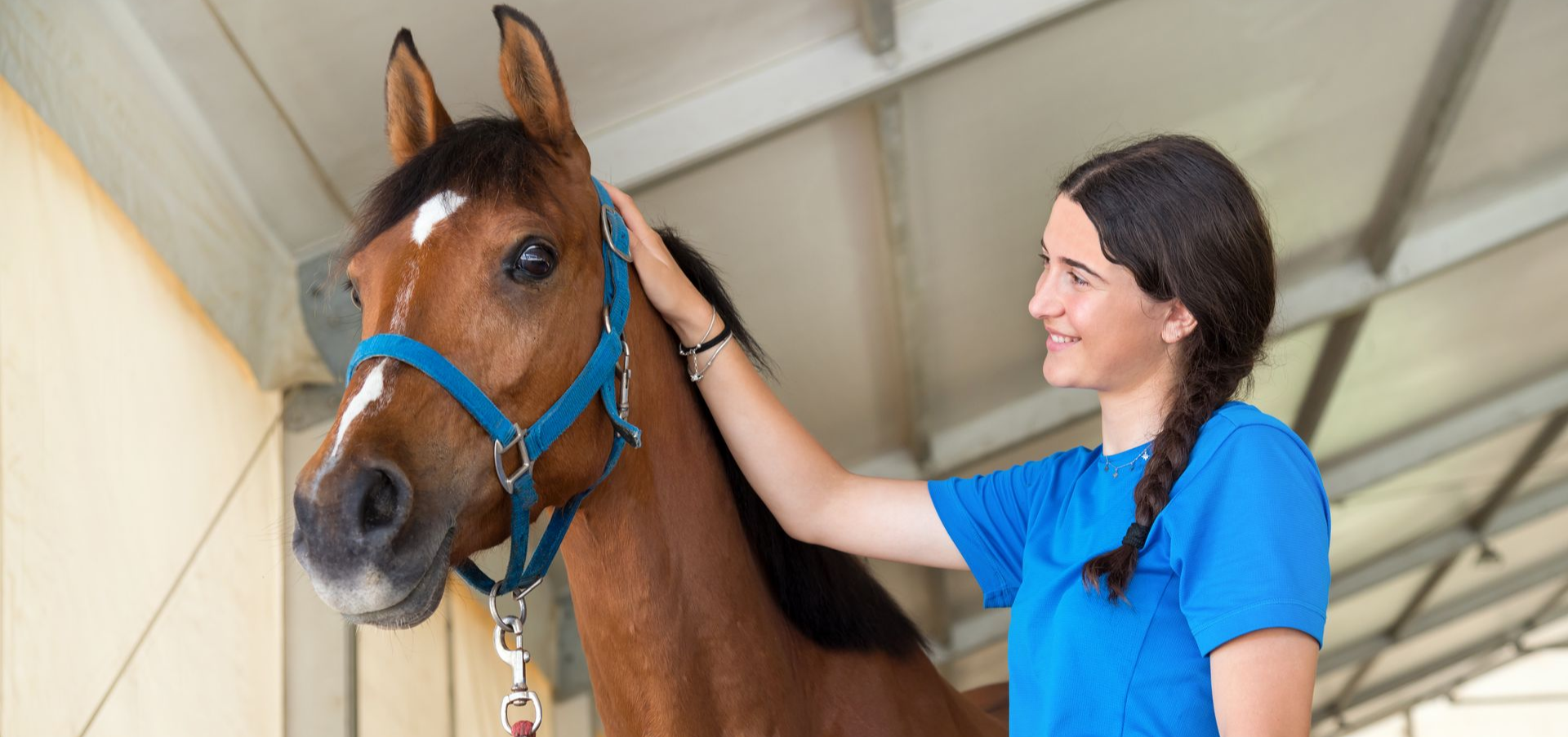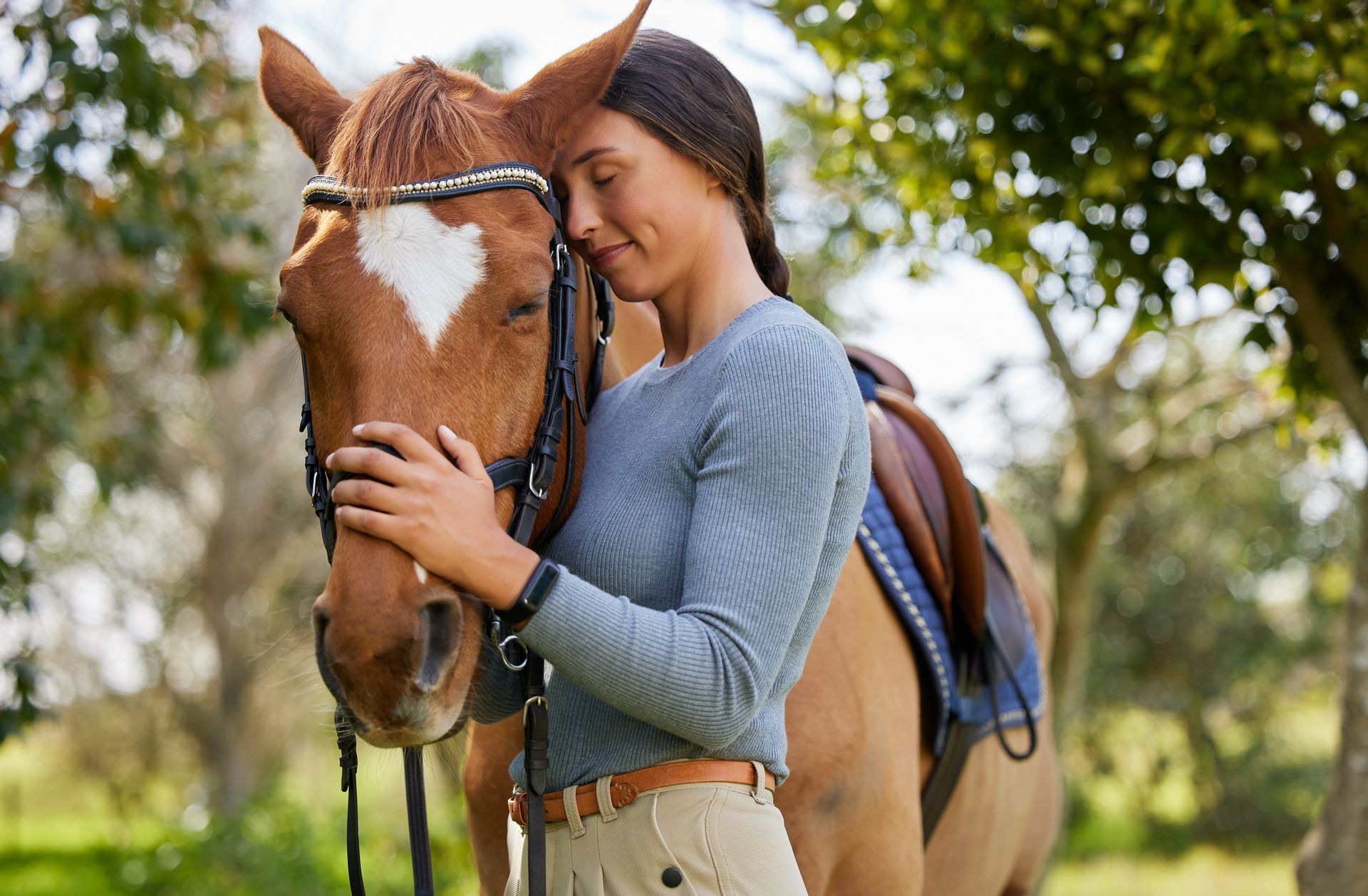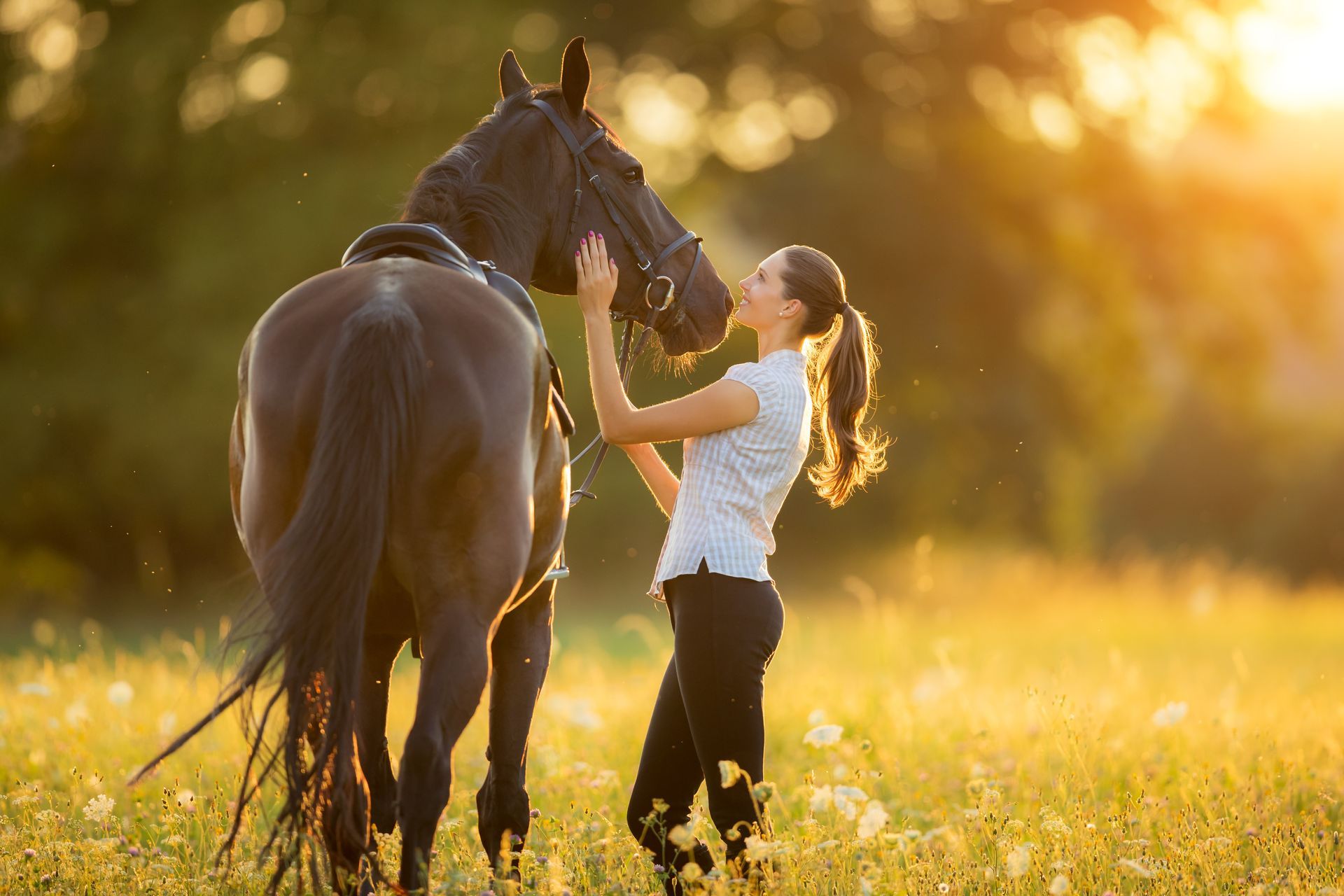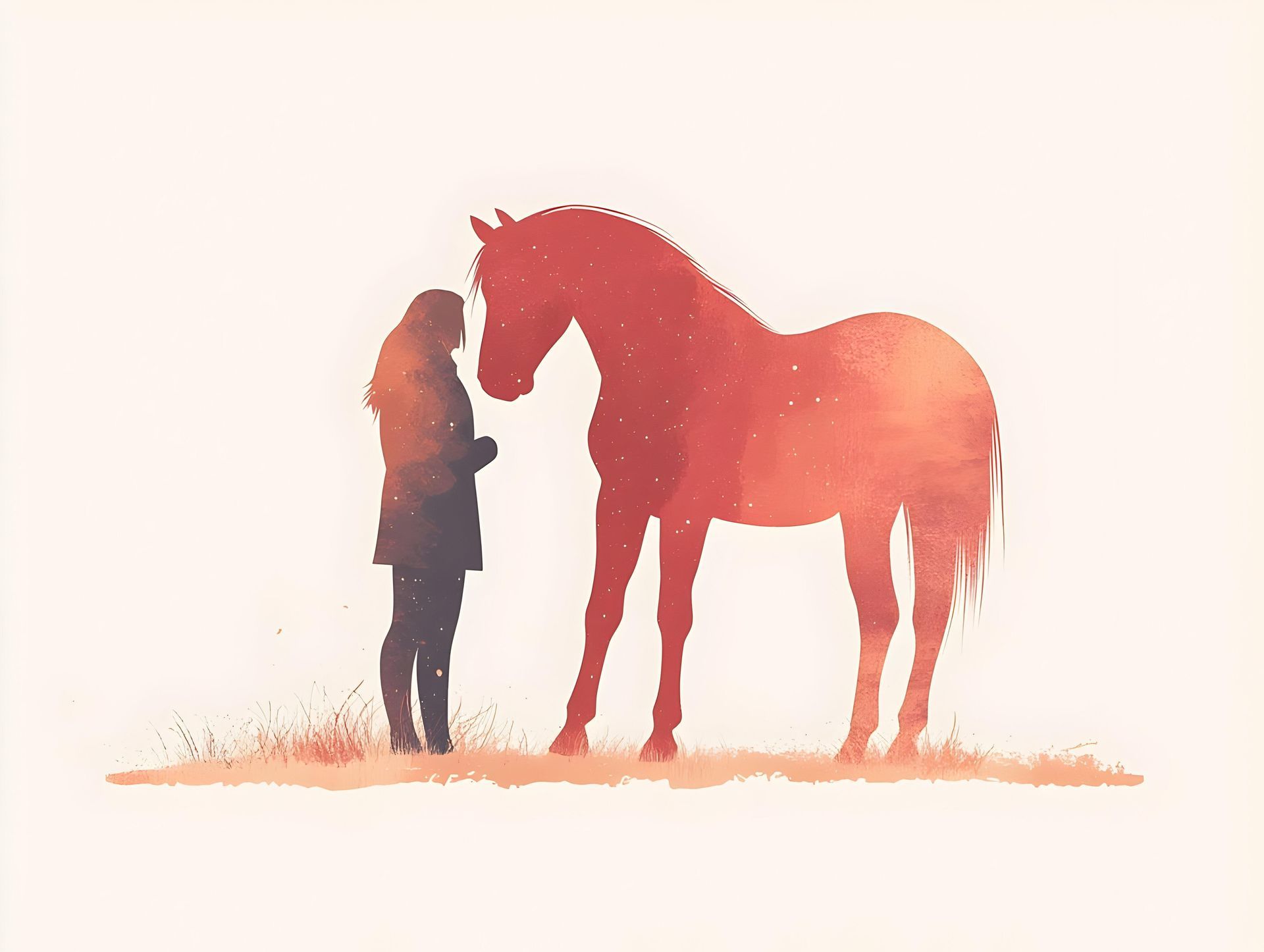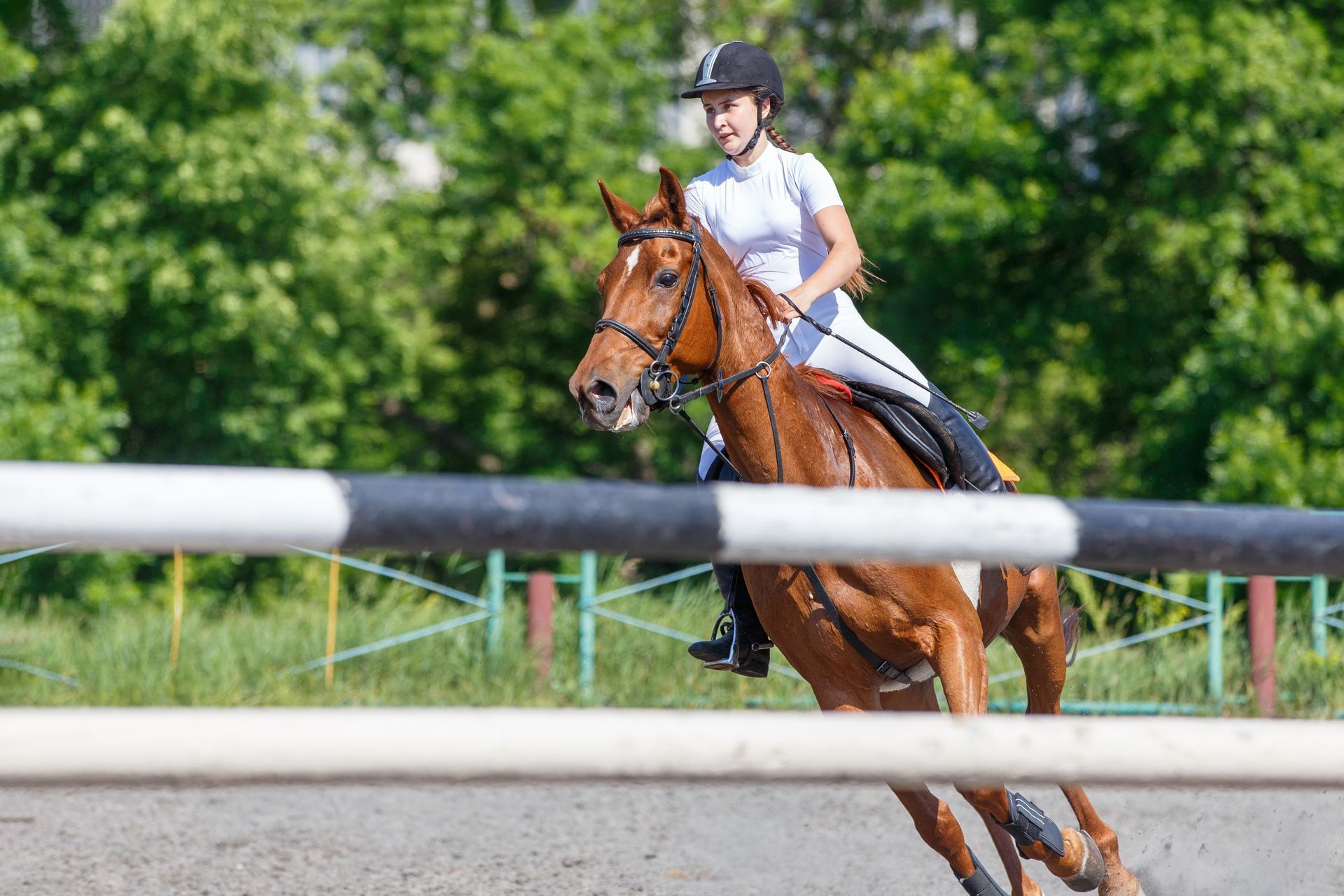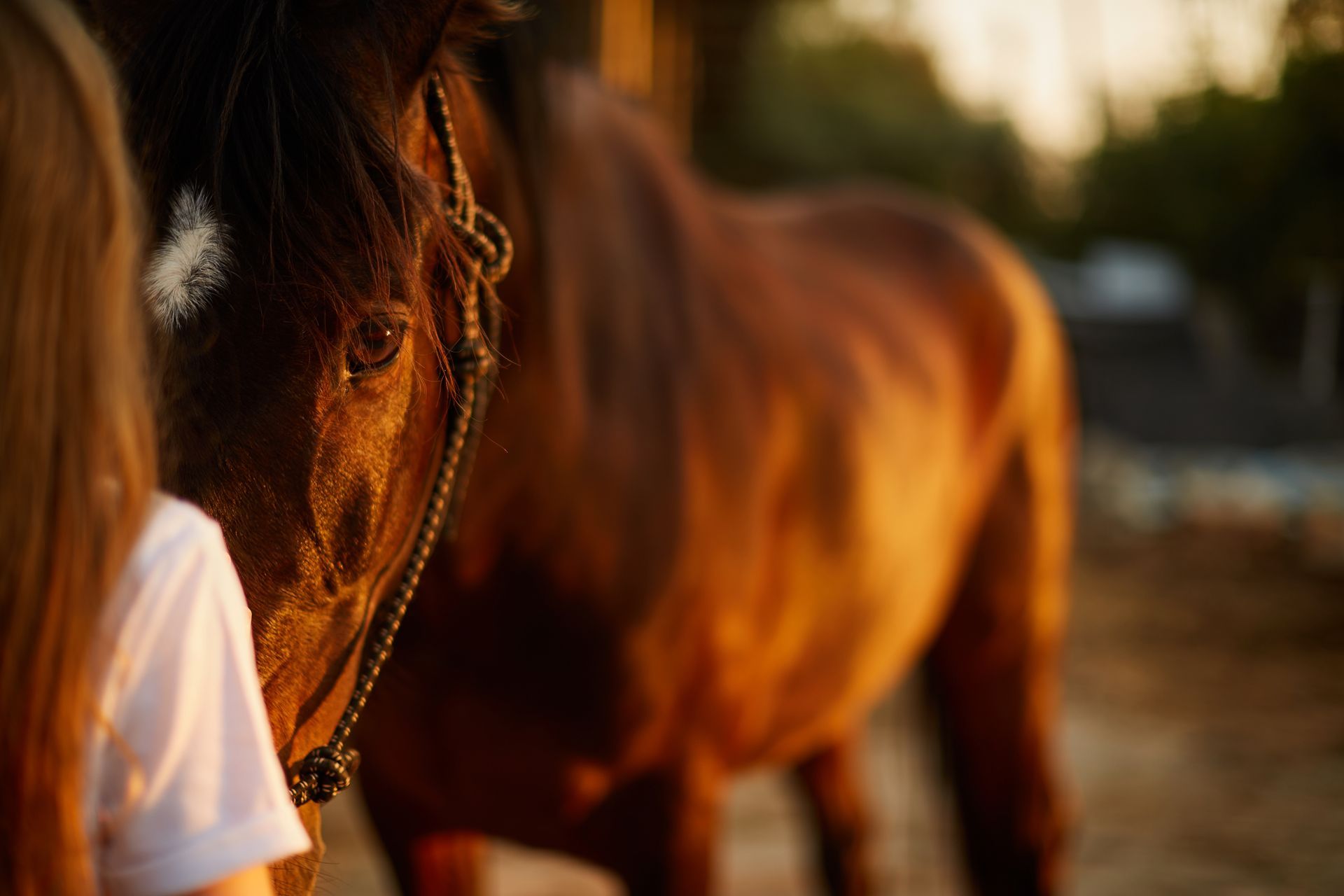I used to think boundaries were rigid barriers that kept people out and protected me from harm. As someone who struggled with people-pleasing and saying no, I believed that having boundaries meant being mean, selfish, or disconnected from others.
It wasn't until I began working with horses that I discovered the truth: healthy boundaries aren't walls at all. They're more like a dance; fluid, responsive, and deeply relational.
Horses became my greatest teachers about what authentic boundaries look like, and now they help my clients discover this same wisdom every day.
The Problem with Human Boundary Teaching
Most of us learned about boundaries from other humans who were also struggling with them. We were taught to:
- Say no without explanation (which felt harsh and disconnected)
- Put up walls to protect ourselves (which created isolation)
- Be aggressive to defend our space (which went against our nature)
- Feel guilty for having needs (which made boundaries feel selfish)
No wonder so many of us struggle with boundaries! We were taught techniques without understanding the underlying energy and relationship dynamics that make boundaries actually work.
Horses are masters of healthy boundaries. As prey animals living in herds, their survival depends on their ability to communicate clearly, set limits, and maintain relationships simultaneously. Here's what makes their approach so different:
Boundaries Are About Connection, Not Separation
When a horse sets a boundary, they're not rejecting the other horse, they're clarifying the terms of their relationship. A mare might pin her ears and move her hindquarters toward another horse who's getting too close to her food. This isn't aggression; it's communication. She's saying, "I value our relationship AND I need you to respect my space right now."
They're Clear and Immediate
Horses don't hint, manipulate, or build resentment. When they need space, they communicate it clearly in the moment. There's no passive-aggressive behavior or storing up grievances. The boundary is set, respected, and then they move on.
They're Proportional
A horse's boundary response matches the situation. If another horse is mildly invading their space, they might simply shift their body position. If the invasion continues, they might pin their ears. Only if the message isn't received do they escalate to more dramatic communication. They use the minimum energy necessary to get their message across.
They Don't Hold Grudges
After setting a boundary, horses return to neutral. They don't punish, withdraw, or hold onto resentment. The boundary was about that moment, not about the entire relationship.
What I Learned About My Own Boundaries
Working with horses revealed how disconnected I was from my own boundary system. I realized I had been:
Ignoring Early Warning Signals
Just like I had ignored my body's pain signals during my competitive riding days, I was ignoring my emotional and energetic signals about boundaries. By the time I finally said no to something, I was already resentful and exhausted.
Making Boundaries About the Other Person
I thought boundaries were about controlling other people's behavior rather than taking responsibility for my own energy and space. Horses taught me that boundaries are about me, my needs, my energy, my space, not about making others wrong.
Confusing Boundaries with Walls
I thought I had to choose between having no boundaries (and feeling overwhelmed) or having rigid walls (and feeling isolated). Horses showed me there was a third option: flexible, responsive boundaries that maintain connection while protecting my energy.
How Horses Teach Boundary Work in My Practice
The Approach Exercise
One of my favorite exercises involves having clients practice approaching a horse while paying attention to the horse's body language and their own internal signals. The horse provides immediate feedback about the client's energy and approach.
What Clients Learn:
- How their energy affects others
- How to read subtle communication signals
- How to adjust their approach based on feedback
- How to respect others' boundaries while staying connected
Common Discoveries:
- "I didn't realize I was being so pushy with my energy"
- "I can be assertive without being aggressive"
- "I don't have to take it personally when someone needs space"
The Space Bubble Exercise
Clients practice creating and maintaining their own energetic space while interacting with horses. This helps them understand that boundaries aren't just about saying no, they're about maintaining your own center while in relationship.
What Clients Learn:
- How to maintain their energy in the presence of others
- The difference between healthy space and disconnected walls
- How to communicate their needs without words
- How their internal state affects their external boundaries
The Feeding Time Observation
Watching horses navigate boundaries around food provides powerful lessons about resource protection, hierarchy, and respectful communication.
What Clients Learn:
- How to protect their resources (time, energy, attention) without guilt
- How healthy competition and cooperation can coexist
- How to communicate needs clearly and directly
- How to respect others' boundaries even when you want something they have
Practical Boundary Lessons from Horses
Start with Your Internal State
Horses taught me that boundaries begin internally. Before you can set an external boundary, you need to know what you're feeling and what you need. Horses are constantly checking in with their internal state, are they safe? comfortable? hungry? We can learn to do the same.
Practice: Throughout the day, pause and ask yourself: "What am I feeling right now? What do I need?"
Use Your Body's Wisdom
Horses communicate boundaries through their entire body—ears, tail, posture, movement. Your body is also constantly giving you information about your boundaries. That tight feeling in your chest when someone asks for a favor you don't want to do? That's boundary information.
Practice: Notice how different people and situations affect your body. What does a boundary violation feel like in your body? What does healthy space feel like?
Communicate Early and Clearly
Horses don't wait until they're furious to set a boundary. They start with subtle signals and escalate only if necessary. We can learn to communicate our needs before we reach the resentment stage.
Practice: Notice your early warning signals (feeling drained, slightly annoyed, energetically off) and practice communicating your needs at this stage rather than waiting until you're overwhelmed.
Stay in Relationship
The goal isn't to push people away, it's to create the conditions for healthy relationship. Horses maintain connection even while setting boundaries. They're saying, "I want to be in relationship with you AND I need you to respect my space."
Practice: When setting boundaries, lead with care: "I care about our relationship, and I need to take care of myself by..."
Common Boundary Challenges Horses Help With
The People-Pleaser
Horses don't respond to people-pleasing energy, they respond to authentic, grounded energy. Clients who struggle with people-pleasing often discover that horses actually prefer them when they're being genuine rather than trying to be liked.
The Over-Giver
Horses teach us about reciprocity and energy exchange. They show us what it looks like to give and receive in balance, without depleting ourselves or others.
The Conflict Avoider
Horses demonstrate that healthy conflict is part of relationship. They show us how to address issues directly without damaging the connection.
The Perfectionist
Horses don't expect perfection, they expect authenticity. They teach us that boundaries are a practice, not a performance.
The Ripple Effect of Healthy Boundaries
When my clients learn boundary skills through working with horses, the effects ripple out into every area of their lives:
In Relationships:
- They can say no without guilt
- They attract people who respect their boundaries
- They stop attracting people who drain their energy
- Their relationships become more authentic and satisfying
At Work:
- They stop taking on everyone else's responsibilities
- They communicate their needs more clearly
- They feel less overwhelmed and more effective
- They model healthy boundaries for others
With Family:
- They can love their family without losing themselves
- They stop trying to fix or control others
- They create space for authentic connection
- They break generational patterns of poor boundaries
Your Invitation to Learn from Horses
If you're struggling with boundaries, whether you have walls that keep everyone out or no boundaries that leave you overwhelmed; horses can teach you a different way. They can show you how to:
- Stay connected to yourself while in relationship with others
- Communicate your needs clearly and kindly
- Protect your energy without building walls
- Navigate conflict while maintaining connection
- Trust your internal guidance system
Boundaries aren’t about being harsh or selfish, they’re about creating the space for honest, lasting relationships. They honor both your needs and the needs of others, allowing you to stay true to yourself while staying open to connection.
The horses are ready to share what they’ve taught me: healthy boundaries are an act of love, for yourself and those around you. They make room for real intimacy and authentic connection to grow. As a Licensed Clinical Social Worker (LCSW) and Certified Equus Coach, I guide clients in Boulder, Golden, and Denver, Colorado through equine-assisted therapy, nature-based therapy, and EMDR. These approaches help people build healthy boundaries and cultivate authentic relationships with the wisdom of horses and the healing power of nature.
If you’re ready to explore what the horses have always known, that the strongest relationships are built on clear, compassionate boundaries, I invite you to take this step toward healing and growth.
